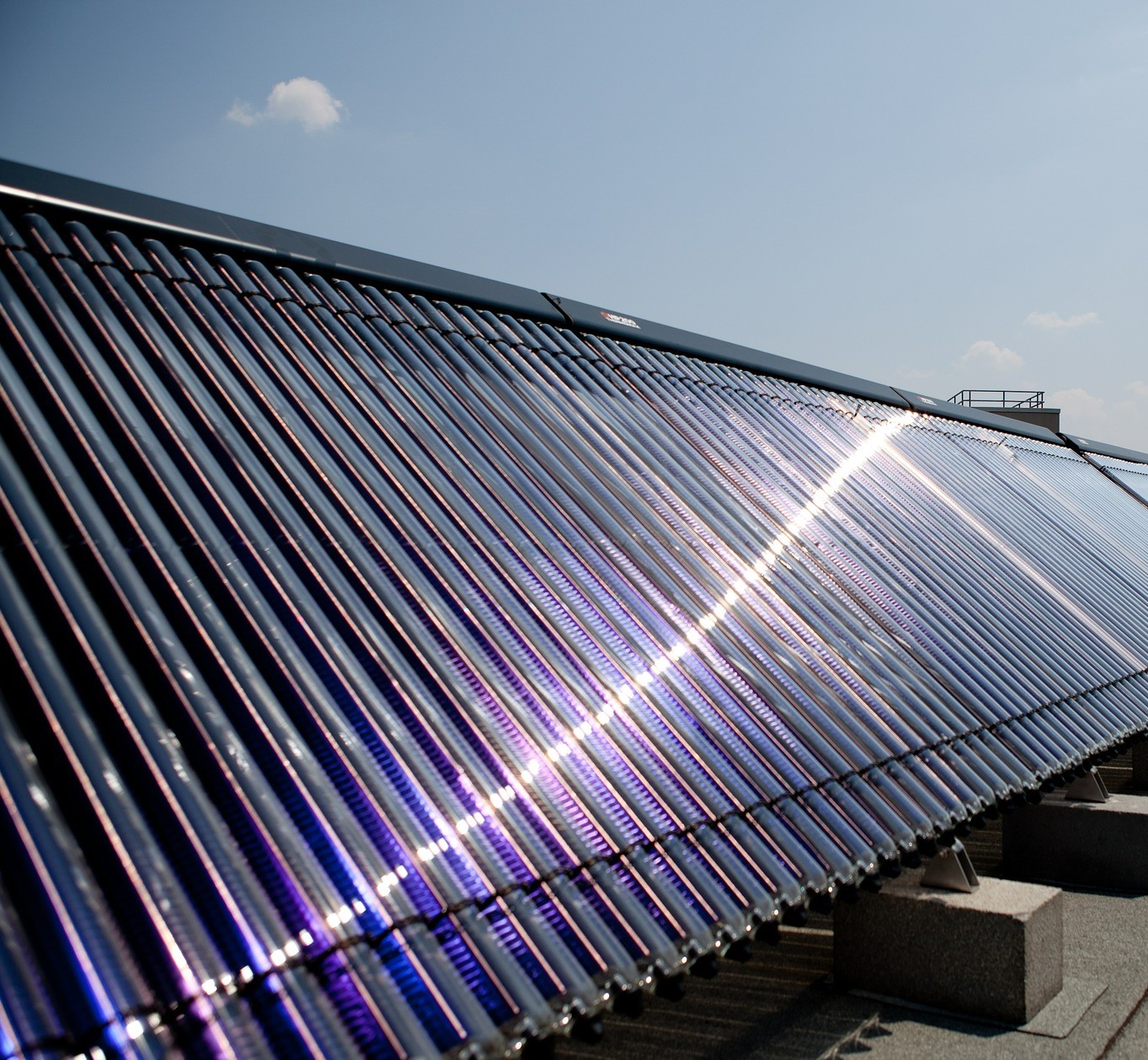The effect of different working fluids and internal geometries on the efficiency of evacuated tube heat pipe solar collectors
DOI:
https://doi.org/10.17159/2413-3051/2020/v31i4a8480Keywords:
Evacuated tube; solar collector; heat pipe; thermal performance; working fluidAbstract
In this study, a heat pipe was modified with designed and manufactured inserts of specific profiles in order to investigate the effect of the internal geometries and working fluids on the efficiency of the evacuated tube heat pipe solar collector. The experimental rig was made of a mobile frame, an insulated water tank, a solar simulator and an evacuated tube heat pipe. Using an average irradiance of 700 watts per square meter, the indoor tests were conducted first on a heat pipe without any working fluid (dry mode) and later on the heat pipe containing, in turn, each of the six working fluids for each of the five geometries. Results show that, when inserting different profiles in the heat pipe, there is an enhancement of the heat transfer and hence an increase in the efficiency of the evacuated heat pipe solar collector.
Downloads
References
Kopnina, H., 2016. Energy policy in the European Union: Renewable energy and the risks of subversion. In Governance and security issues of the European Union (pp. 167-184). TMC Asser Press, The Hague.
https://doi.org/10.1007/978-94-6265-144-9_10
Ayompe, L.M. and Duffy, A., 2013. Thermal performance analysis of a solar water heating system with heat pipe evacuated tube collector using data from a field trial. Solar Energy, 90: 17-28.
https://doi.org/10.1016/j.solener.2013.01.001
Choi, Y., 2018. An experimental study of the solar collection performance of liquid-type solar collectors under various weather conditions. Energies, 11(7): 1626.
https://doi.org/10.3390/en11071626
Elsheniti, M.B., Kotb, A. and Elsamni, O., 2019. Thermal performance of a heat-pipe evacuated-tube solar collector at high inlet temperatures. Applied Thermal Engineering, 154: 315-325.
https://doi.org/10.1016/j.applthermaleng.2019.03.106
Jafarkazemi, F. and Abdi, H., 2012. Evacuated tube solar heat pipe collector model and associated tests. Journal of Renewable and Sustainable Energy, 4(2): 023101.
https://doi.org/10.1063/1.3690958
Shafieian, A., Khiadani, M. and Nosrati, A., 2018. A review of latest developments, progress, and applications of heat pipe solar collectors. Renewable and Sustainable Energy Reviews, 95: 273-304.
https://doi.org/10.1016/j.rser.2018.07.014
Sabiha, M.A., Saidur, R., Mekhilef, S. and Mahian, O., 2015. Progress and latest developments of evacuated tube solar collectors. Renewable and Sustainable Energy Reviews, 51: 1038-1054.
https://doi.org/10.1016/j.rser.2015.07.016
Byon, C., 2016. Heat pipe and phase change heat transfer technologies for electronics cooling. Electronics Cooling.
Reay, D., McGlen, R. and Kew, P., 2013. Heat pipes: theory, design and applications. Butterworth-Heinemann.
Peyghambarzadeh, S.M., Hallaji, H., Bohloul, M.R. and Aslanzadeh, N., 2017. Heat transfer and Marangoni flow in a circular heat pipe using self-rewetting fluids. Experimental Heat Transfer, 30(3): 218-234.
https://doi.org/10.1080/08916152.2016.1233148
Manimaran, R., Palaniradja, K., Alagumurthi, N. and Velmurugan, K., 2012. An investigation of thermal performance of heat pipe using Di-water. Science and Technology, 2(4): 77-80. https://doi.org/10.5923/j.scit.20120204.04
Kuroda, M., Chang, J.Y., Gwin, P., Mongia, R., Kim, C.U., Cabusao, G.P., Goto, K. and Mochizuki, M., 2014. Development of aluminum-water heat pipes. Heat Pipe Science and Technology, An International Journal, 5(1-4).
https://doi.org/10.1615/HeatPipeScieTech.v5.i1-4.110
Anderson, W.G., Rosenfeld, J.H., Angirasa, D. and Mi, Y., 2004, February. Evaluation of heat pipe working fluids in the temperature range 450 to 700 K. In AIP Conference Proceedings (Vol. 699, No. 1: 20-27). American Institute of Physics.
https://doi.org/10.1063/1.1649553
Franchi, G. and Huang, X., 2008. Development of composite wicks for heat pipe performance enhancement. Heat Transfer Engineering, 29(10): 873-884.
https://doi.org/10.1080/01457630802125740
Mustaffar, A., Phan, A.N., Reay, D. and Boodhoo, K., 2019. Concentric annular heat pipe characterisation analysis for a drying application. Applied Thermal Engineering, 149: 275-286.
https://doi.org/10.1016/j.applthermaleng.2018.12.047
Faghri, A., 1989. Performance characteristics of a concentric annular heat pipe: Part 2-Vapor flow analysis. Journal of Heat Transfer (Transactions of the ASME (American Society of Mechanical Engineers), Series C); (United States), 111(4).
https://doi.org/10.1115/1.3250796
Nouri-Borujerdi, A. and Layeghi, M., 2005. A review of concentric annular heat pipes. Heat Transfer Engineering, 26(6): 45-58.
https://doi.org/10.1080/01457630590950934
Zawilska, E. and Brooks, M.J., 2011. An assessment of the solar resource for Durban, South Africa. Renewable Energy, 36(12): 3433-3438.

Downloads
Published
Issue
Section
License
Copyright (c) 2020 Jean Gad Mukuna, Jasson Gryzagoridis

This work is licensed under a Creative Commons Attribution-ShareAlike 4.0 International License.



.png)